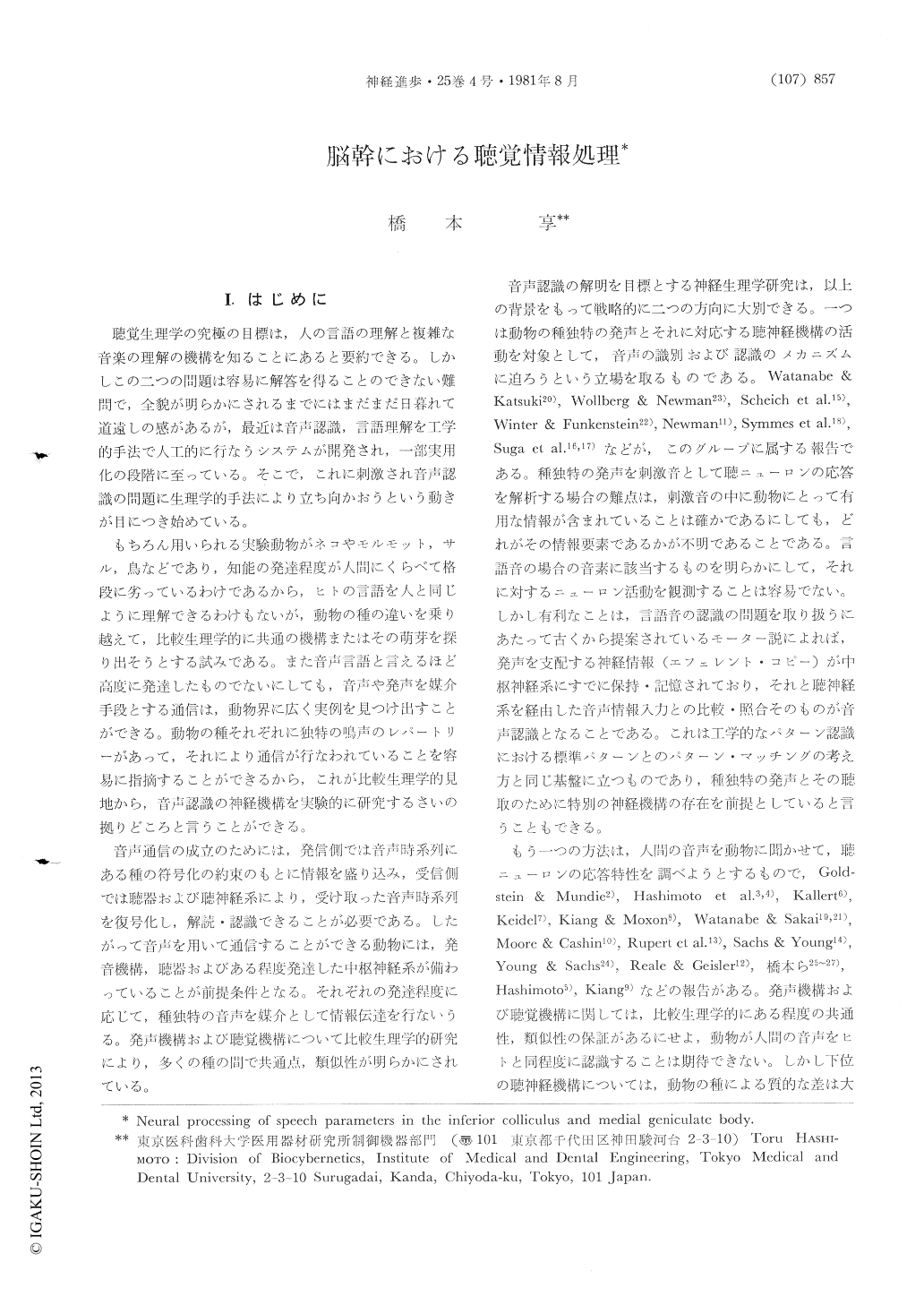Japanese
English
- 有料閲覧
- Abstract 文献概要
- 1ページ目 Look Inside
I.はじめに
聴覚生理学の究極の目標は,人の言語の理解と複雑な音楽の理解の機構を知ることにあると要約できる。しかしこの二つの問題は容易に解答を得ることのできない難問で,全貌が明らかにされるまでにはまだまだ日暮れて道遠しの感があるが,最近は音声認識,言語理解を工学的手法で人工的に行なうシステムが開発され,一部実用化の段階に至っている。そこで,これに刺激され音声認識の問題に生理学的手法により立ち向かおうという動きが目につき始めている。
もちろん用いられる実験動物がネコやモルモット,サル,鳥などであり,知能の発達程度が人間にくらべて格段に劣っているわけであるから,ヒトの言語を人と同じように理解できるわけもないが,動物の種の違いを乗り越えて,比較生理学的に共通の機構またはその萌芽を探り出そうとする試みである。また音声言語と言えるほど高度に発達したものでないにしても,音声や発声を媒介手段とする通信は,動物界に広く実例を見つけ出すことができる。動物の種それぞれに独特の鳴声のレパートリーがあって,それにより通信が行なわれていることを容易に指摘することができるから,これが比較生理学的見地から,音声認識の神経機構を実験的に研究するさいの拠りどころと言うことができる。
Abstract
The neural representation of speech parameters was investigated in the higher parts of the audi-tory pathway of a guinea pig. Single unit re-sponses were recorded to the synthetic speech-like sound from an unanesthetized animal. The speech-like sound was produced by a bank of octave band-pass filters to the input of a train of pulses, following the "terminal analog" model of speech production. It was provided with a formant structure superimposed on the harmonic fine struc-ture of a voice pitch and the formant transition and the consonant-vowel combination were also simulated though not refined enough.

Copyright © 1981, Igaku-Shoin Ltd. All rights reserved.


